Are you an Anywhere person or a Somewhere person? Do you identify with your experiences or with an area?
The terms Anywheres and Somewheres were coined by David Goodhart, a British journalist, in his 2017 book The New Tribes Shaping British Politics. Written in the aftermath of Brexit, he proposed that the old political tribes of left and right no longer applied and that people are now more likely to make decisions based on whether their worldview is that of an Anywhere or a Somewhere.
This is a tribal grouping that can probably be seen not just in the UK but across Western societies.
But of course, nothing’s quite that neat in real life. Especially when you identify with a Somewhere part of London also inhabited by Anywheres and you’ve lived abroad as an Anywhere.
Anywhere is Somewhere
Anywhere
Despite being just 25% of the population, Anywheres dominate British society from politics to journalism to business leaders according to Mr Goodhart. They are generally well-educated and have often moved from their original place of birth to live in a major city, typically London.
They base their identity on life experiences rather than location and are almost certainly middle-class.
Somewhere
Somewheres are around 50% of the UK population and as you’d expect from the name, they identify more with a location.
So a Somewhere might identify, for example, as a Scouser (the term for someone from Liverpool) or a Cockney, which implies East London working class. Somewheres will have skills but they will not necessarily be academic. They are unlikely to be as mobile as Anywheres and will usually live close to where they were raised.
An example of a Somewhere identity is the fans of the team I support in East London: West Ham United. The fans often refer to themselves and the team, not as West Ham or even by their official nickname The Hammers often used in the media, but as The Cockney Boys.
When the team is winning, they will sing 1-0 to The Cockney Boys.
This highlights their Somewhere connection in their identity and that of the team to East London. Their identity is a place.
But more often, the supporters refer to the team as The Irons.
West Ham were originally called Thames Ironworks Football Club officially, or more commonly, The Irons. It was born out of the works team of a shipbuilding company called Thames Ironworks in East London.
They changed their name to West Ham United in 1900. However, 124 years later, the supporters continue to use the team’s original name of The Irons, identifying with the same location where their great-great-grandparents lived.
If that is not Somewhere, nothing is.
The team now play at the converted 2012 London Olympic Stadium and 75% of the players are from outside the UK and those who are British including the coach, are not from East London. But the Somewhere fans and their families are.
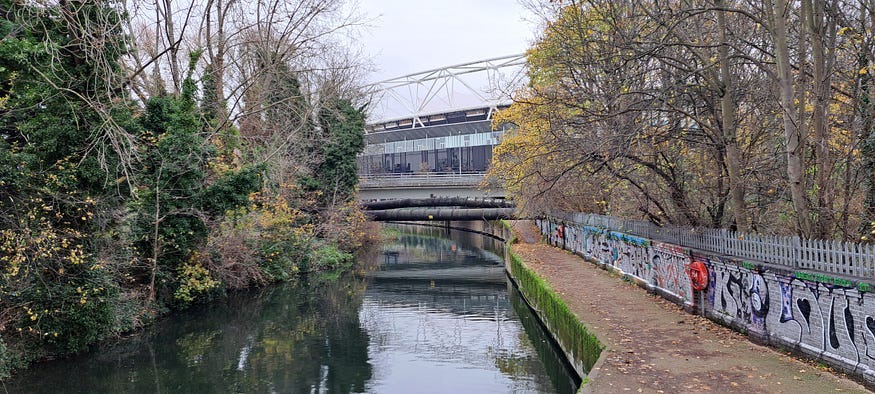
When the team moved just two miles and further from the old Ironworks location to a new home at the former Olympic Stadium a few years back, there was uproar amongst many of the supporters. Two miles? Outrageous.
Inbetweeners
However, as well as the Anywheres and Somewheres, the other 25% of the population are Inbetweeners whose world view will be Somewhere or Anywhere depending on the topic or issue.
This is my tribe.
Going to Somewhere
The identification of the two tribes and the half & half tribe has a sociological logic and may help to explain recent political changes and political elections. I don’t know how useful it is for politicians in the longer term and, to be honest, I’m not bothered. It’s not where this article is going.
Seeing London through Anywhere eyes
I like the Somewhere-Anywhere definitions when I think about my return to live in London again as a Somewhere one year after spending five years in Valencia Spain as an Anywhere. I realised I hadn’t always taken advantage of my Somewhere London side when I lived there.
So my latest London Somewhere recharge was a photo stroll through the area where my father and grandparents used to live — Bow in East London. More specifically, the former industrial Old Ford area of Bow that lies behind the West Ham United stadium.
My family would not recognise much of their former Something homeland; there’s been so much regeneration and there’s still a lot of construction. Even I don’t recognise it much from when I lived nearby just 20 years ago.
Being an Inbetweener, I love today’s mix of the old Somewhere and the new Anywhere in Old Ford. And as someone with far too many hobbies, this trip around my Somewhere-Anywhere family homeland was also to feed my occasional photography hobby.
But first, a coffee stop in a former factory (Somewhere) and now a trendy expensive coffee bar (Anywhere).
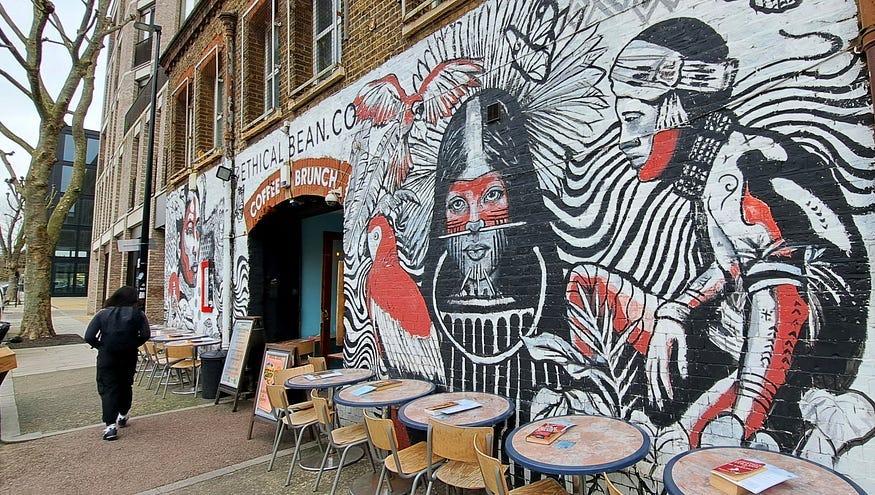
All my expat friends back in Valencia (and my wife) are Anywheres. Unlike me, none of them missed their original countries and none of them have a Somewhere side that makes them go back every couple of months to watch football, cricket and music concerts in their former home countries or cities.
I know Valencia has two football teams and music but they weren’t the right type. If you’re an Inbetweener, you’d understand even if you supported Valencia Football Club when you lived there. Something is missing when you have a Somewhere side and you’re not there.
The conservative native Valencianos were most definitely Somewheres. The expression Valencianos use to explain their regular rituals and habits such as Sunday lunch with their families in the same restaurant or home every week was to say it was Toda La Vida — all their life.
I’ve heard younger Anywhere Valencianos call their compatriots the Todo La Vidas.
Old Ford is what it says on the tin
The place name Old Ford comes from it being exactly that: an old ford. It was a natural ford the Romans used and extended and was on the main eastern route into the city of London. Knowing all this shows my Somewhere side. My Somewhere brain also knows that the ford was replaced by a bridge in the 12th century and because the bridge was a bow shape, they called the entire area…. Bow.
Much of Old Ford is situated on an area known as Fish Island which isn’t an island. It does have water on two sides so I suppose it’s halfway there.
Fish Island used to be called The Island by the locals, despite it never being an island. When it was being developed in Victorian times, the developers named the new streets after fish so the locals started calling it Fish Island. That’s yet another Somewhere thing to know.
After my expensive organic coffee, I went for a stroll along the many waterways of Old Ford. There are a lot of waterways in the area; man-made navigation canals from its industrialised past as well as the natural River Lea and Hackney Brook.
The former Roman ford is close to lock gates. To the left of the next photo is Fish Island which as we now know isn’t an island but did form part of the old Roman ford.
And just to confuse you a little more, the photo looks at the River Lea which bears right past the houseboat and under the footbridge. The branch that continues straight ahead and past the island on the left (that isn’t an island) towards the lock gate is called the River Lee.
Of course it is.
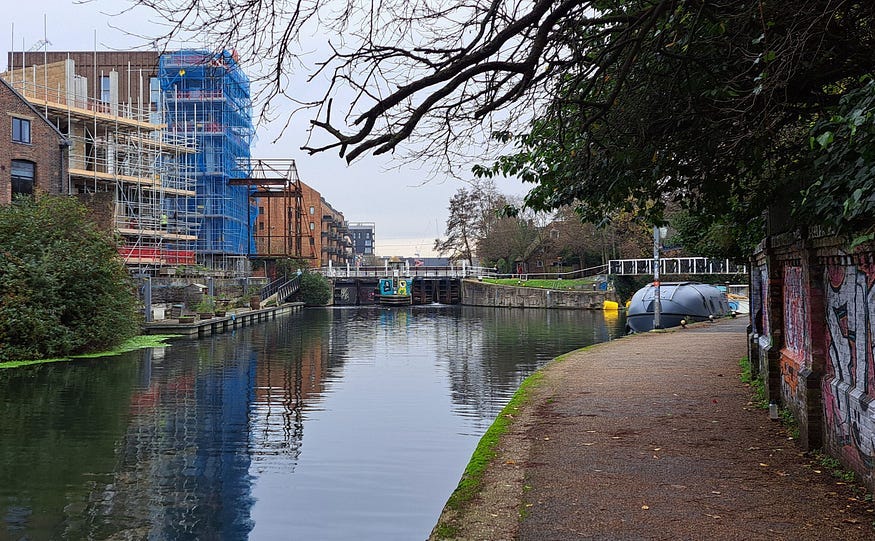
Somewhere under the modern apartment blocks on the left and lock gates is the Roman Ford.
This must be the only area in the world with lots of waterways that isn’t called Little Venice. Maybe that’s because there’s a Little Venice in West London. But they’re all Anywheres over there in the west and besides, they don’t have as much water as us. Just the one canal.
1–0 to the Cockney Boys.
Art and design
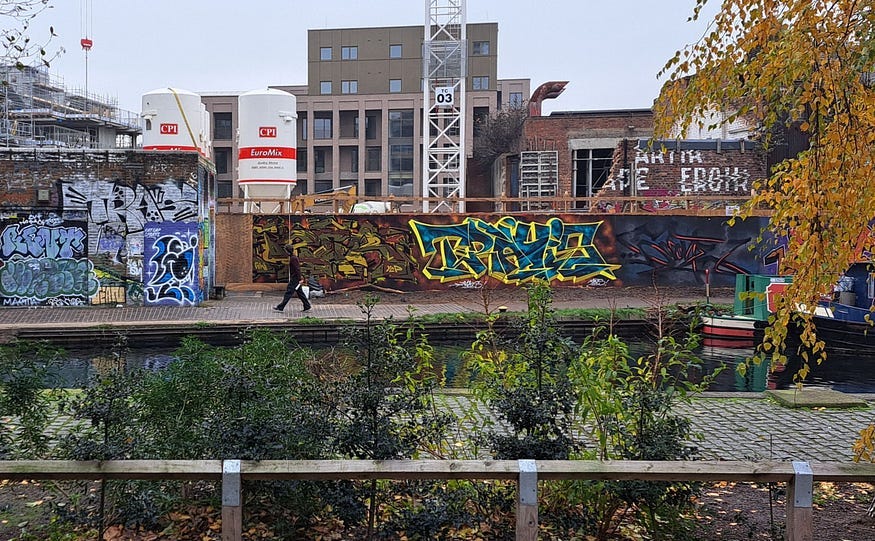
There’s a lot of street art/graffiti in the area; Old Ford is full of artists workshops and street art is encouraged. There’s a cool friendly arty vibe going on; it’s a lot different to my grandparents’ day when this area was industrial, poor and Somewhere.
My grandparents may have strolled by Old Ford’s rivers and the Hertford Union and Regents canals in the 1930s with their two children, my dad and my uncle Alex. They would have smelt the peanuts from the Percy Dalton factory and heard the hammering noises from the Ironworks.
Maybe they put hankies over their mouths when they passed the rubber and coal tar factories; London’s low-smoke laws were still 30 years in the future and the low-emission zones 90 years away.
All these industries are long gone and it’s unlikely my Somewhere grandparents would have stopped for an Anywhere organic cappuccino and an Italian sausage panini like their grandson did several decades later.
The mix of the old Somewhere my family would have known and the new Anywhere is everywhere. The next image shows a modern apartment block built around two older factories, one daubed with street art/graffiti. The factories in this photo manufacture clothing and the workers are probably Somewheres.
Those living in the apartments are more likely to be in advertising, design or work in the financial district a couple of miles away at Canary Wharf. They will almost certainly be Anywheres. At this stage, I’m in Anywhere mode as I take the photo from the balcony of one of the apartments.
Calling them apartments usually shows they are private Anywhere homes. Social apartments are more often called flats even though they are the same thing.
At the end of the day, we’re all Londoners
It was a long tiring day wandering the streets of East London, my Anywhere sports watch says I’ve done 25,000 steps. There’s only one thing for it: a pint of London Pride beer at the pub to recharge. The pub is always a place for everyone whatever tribe they identify with.
Cheers.
Somewhere, Anywhere or Inbetweener?
Do you identify with an area or your experiences? Has your home area changed as much as Old Ford? Let me know if you’re an Anywhere, Somewhere or an Inbetweener like me and why.

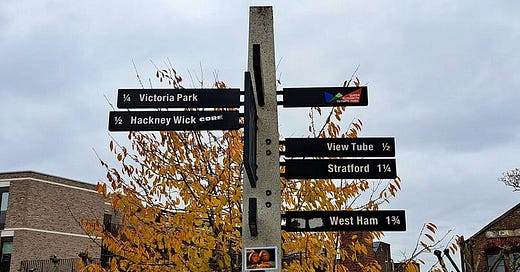



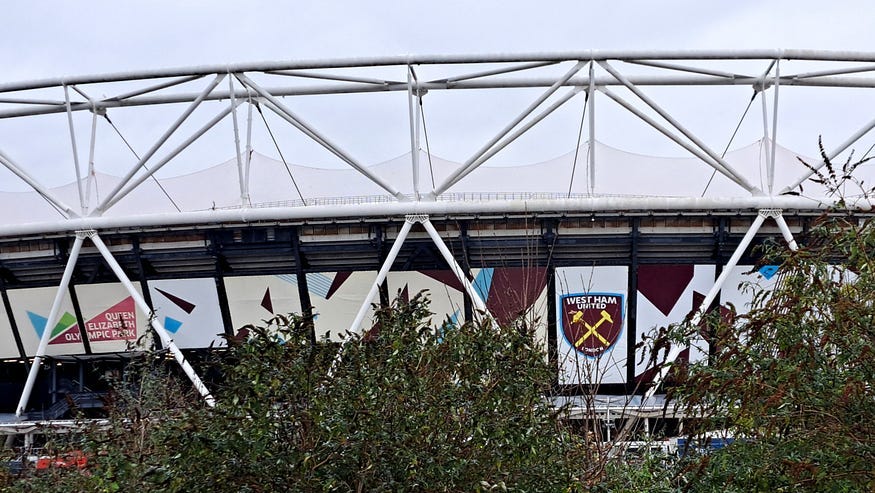
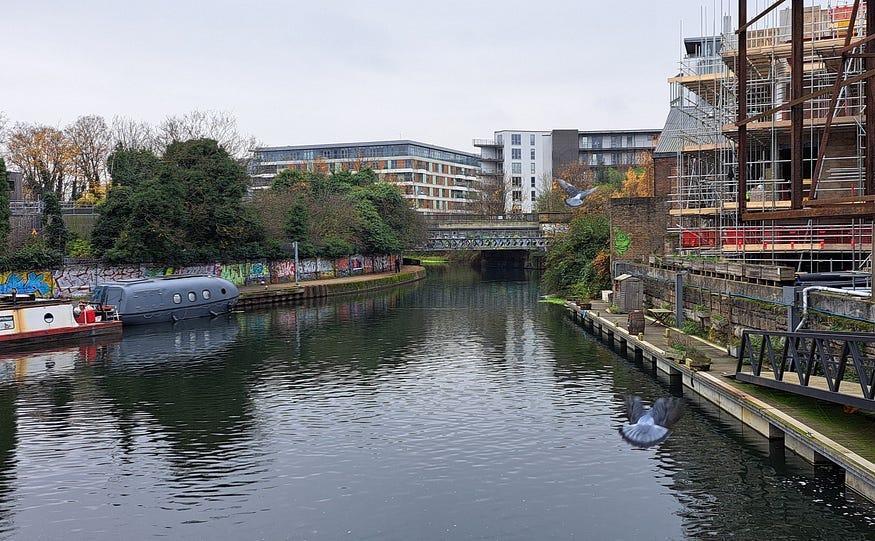
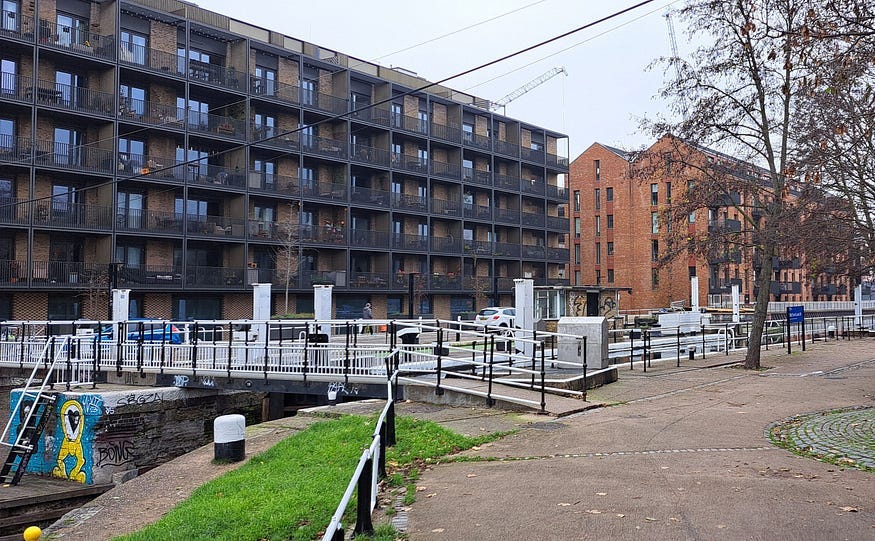
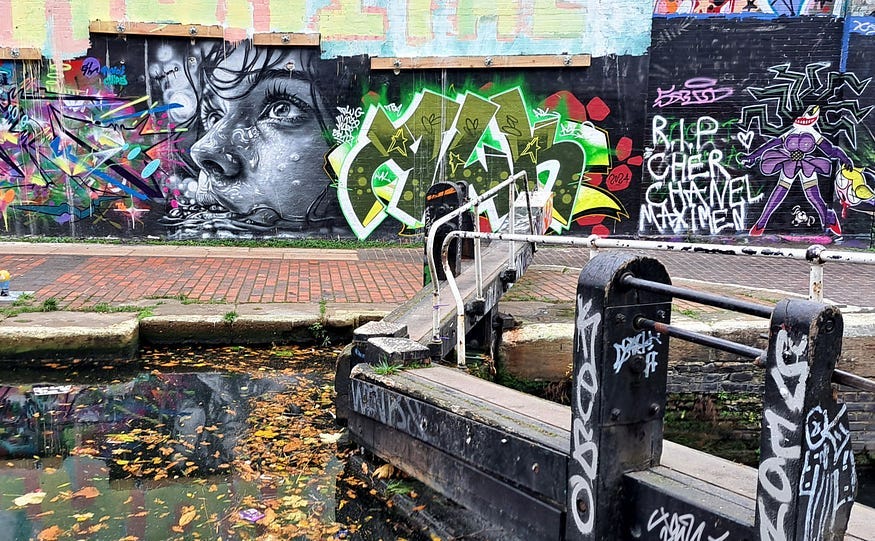
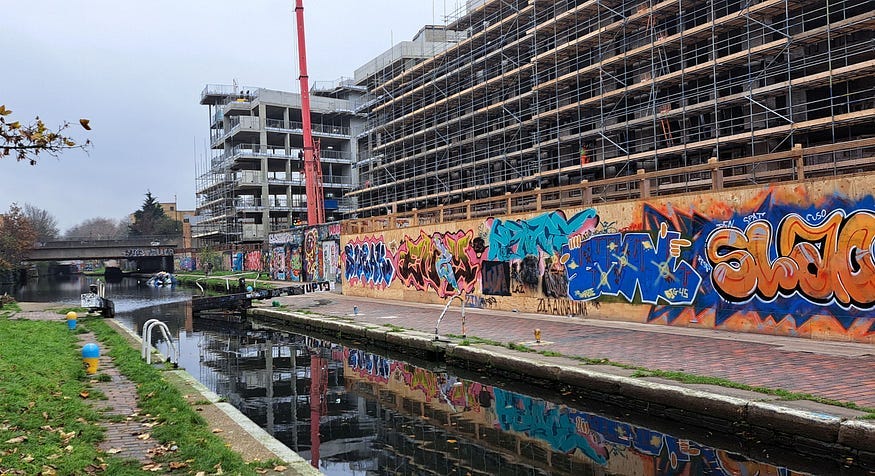

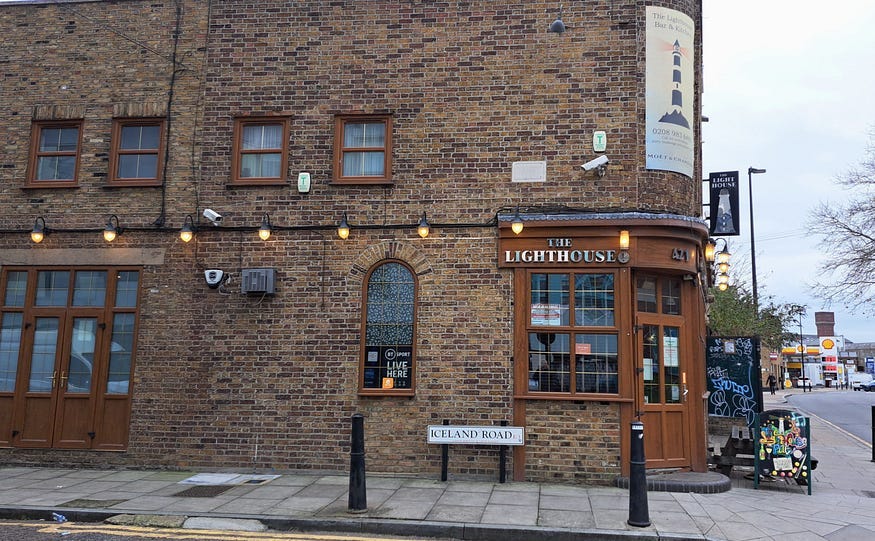
"Somewheres" tend to dominate politics here in Canada. Each of the provinces and territories has a history unique to them, as well as specific social, economic and meteorological concerns, and the affluent ones receive or demand more compared to the less resourceful ones. Their own concerns can be handled at the municipal and provincial level, but creating a coherent federal government out of these disputing factors has always been a balancing act.